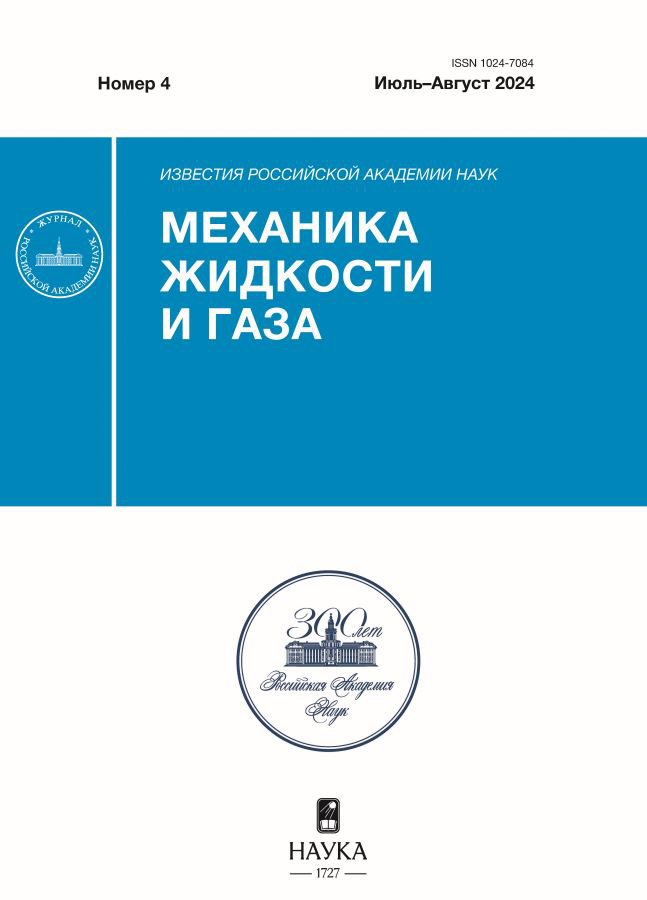Bifurcations and stability of phase transition fronts in geothermal reservoirs
- Авторлар: Tsypkin G.G.1
-
Мекемелер:
- Ishlinsky Institute for Problems in Mechanics RAS
- Шығарылым: № 4 (2024)
- Беттер: 103-111
- Бөлім: Articles
- URL: https://rjeid.com/1024-7084/article/view/682526
- DOI: https://doi.org/10.31857/S1024708424040088
- EDN: https://elibrary.ru/OYKFBX
- ID: 682526
Дәйексөз келтіру
Аннотация
The stability of a layer of water above a layer of vapor, separated by a boiling or condensation surface, in a geothermal reservoir is considered. In an unperturbed state in lowpermeability rocks, there is one interface, which can be either a water boiling surface or a vapor condensation surface. At relatively large permeability values, two new solutions can be formed, corresponding to other positions of the interface. The conditions for the existence and merging of stationary solutions depending on the parameters of the physical system are studied numerically. The stability of stationary positions of interfaces was studied using the normal mode method. It was found that the transition to instability precedes bifurcations of solutions and can occur both at finite and infinite wave numbers.
Негізгі сөздер
Толық мәтін
Авторлар туралы
G. Tsypkin
Ishlinsky Institute for Problems in Mechanics RAS
Хат алмасуға жауапты Автор.
Email: tsypkin@ipmnet.ru
Ресей, Moscow
Әдебиет тізімі
- White D.E., Muffler L.J.P., Truesdell A.H. Vapor-dominated hydrothermal systems compared with hot water systems // Econ. Geol. 1971. V. 66. P. 75–97.
- Grant M.A. Geothermal reservoir modeling // Geothermics. 1983. V. 12. No 4. P. 251–263.
- Igwe Ch.I. Geothermal Energy: A Review // Int. J. Eng. Res. and Technol. 2021. V. 10 No 3. P. 655–661.
- Olasolo P., Juarez M.C., Morales M.P., et al. Enhanced geothermal systems (EGS: A review) // Renew. Sustain. Energy Rev. 2016. V.56. P. 133-–144.
- Chandrasekhar S. Hydrodynamic and Hydromagnetic Stability. Oxford University Press. New York. 1967.
- Schubert G., Straus J.M. Gravitational stability of water over steam in vapor-dominated geothermal system // J. Geoph. Res. 1980. V. 85. No B11. P. 6505–6512.
- Tsypkin G., Il’ichev A. Gravitational stability of the interface in water over steam geothermal reservoirs // Transp. Porous Media. 2004. V. 55. No 2. P. 183–199.
- Ильичев А.Т., Цыпкин Г.Г. Влияние конвективного переноса энергии на устойчивость слоя воды над слоем пара в геотермальных системах // Докл. РАН. 2011. Т. 437. № 4. С. 480–484.
- Ramesh P.S., Torrance K.E. Stability of boiling in porous media // Int. J. Heat Mass Transfer. 1990. V. 33. No 9. P. 1895–1908.
- McGuiness M.J. Steady solution selection and existence in geothermal heat pipes – I. The convective case // Int. J. Heat Mass Transfer. 1996. V. 39. No 2. P. 259–274.
- Pestov I. Stability of vapour–liquid counterflow in porous media // J. Fluid Mech. 1998. V. 364. P. 273–295.
- Amili P., Yortsos Y.C. Stability of heat pipes in vapor–dominated systems // Int. J. Heat Mass Transfer. 2004. V. 47. No 6–7. P. 1233–1246.
- O’Sullivan M.J. Geothermal reservoir simulation // Int. J. Energy Res., 1985. V. 9. P. 319–332.
- Lide D.R. CRC Handbook of Chemistry and Physics (82nd edn). 2001. CRC.
- Соболева Е.Б. Влияние конечных возмущений плотности на развитие неустойчивости Рэлея–Тейлора в пористой среде // ТМФ. 2022. Т. 211. № 2. С. 333–346.
- Il’ichev A.T., Tsypkin G.G. Stability of the interface in a porous medium in the framework of Darcy’s and Brinkman’s approximations // Transp. Porous Media. 2023. V.148. P. 317–333.
- Malkovsky V.I., Magri F. Thermal convection of temperature-dependent viscous fluids within three-dimensional faulted geothermal systems: Estimation from linear and numerical analyses // Water Res. Research. 2016. V.52. P. 2855–2867.
Қосымша файлдар
















